HOW A DYING WIFE & TODDLER DAUGHTER GAVE US RUDOLPH
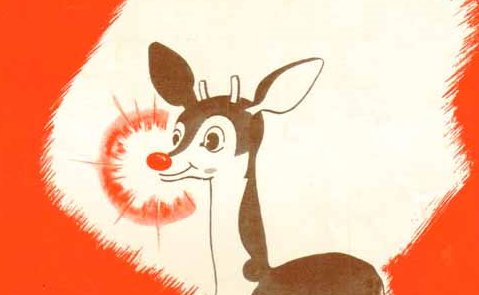 You know Dasher and Dancer and Prancer and Vixen. And yes, you still recall the most famous reindeer of all.
You know Dasher and Dancer and Prancer and Vixen. And yes, you still recall the most famous reindeer of all.
But how did that red-nosed misfit become a key character in Yuletide celebrations? He wasn’t one of the original eight tiny reindeer after all. Just who gave him to us?
Would you believe it was a Jewish man with a dying wife who had a little daughter and worked for a big company?
Grab a cup of eggnog, sit back by the fire and get ready to learn how circumstances combined to create a Christmas classic.
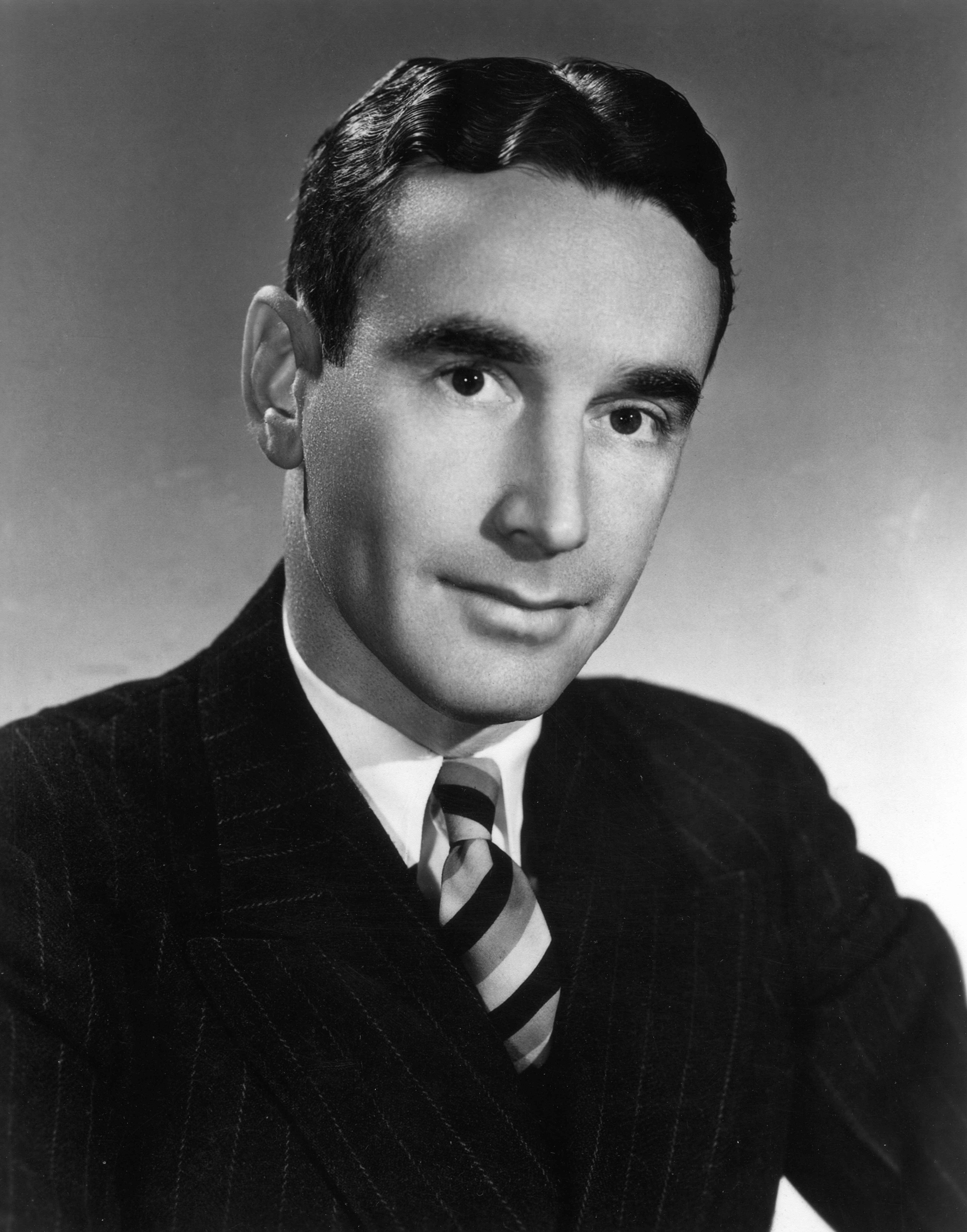 Robert L. May (Bob to his family and friends) grew up in a prosperous Jewish family outside New York City in the early days of the 20th Century. He graduated Phi Beta Kappa from Dartmouth. Then the Great Depression hit and his family was financially ruined.
Robert L. May (Bob to his family and friends) grew up in a prosperous Jewish family outside New York City in the early days of the 20th Century. He graduated Phi Beta Kappa from Dartmouth. Then the Great Depression hit and his family was financially ruined.
Bob and his wife Evelyn moved to Chicago where he found work at Montgomery Ward as a copywriter for their famous catalogs. The hours were long and the pay was low, but in those days having a job, any job, was a blessing. Daughter Barbara was soon born.
But the Mays’ happiness didn’t last long.
Evelyn developed cancer in 1937, a diagnosis that was usually a death sentence back then. Like any loving spouse, Bob spent every penny he had (and then some) getting the best medical treatment possible. But the odds of her recovering were long as he watched Evelyn slowly waste away.
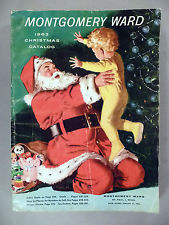 As he struggled with a sick wife and deepening debt, Bob’s boss tasked him with a special assignment in January 1939. Montgomery Ward gave customers a free holiday children’s book every Christmas. Though it was popular, the promotion was also costly. The boss thought they could save money by producing and printing their own book for the next Christmas shopping season. He told Bob to write it.
As he struggled with a sick wife and deepening debt, Bob’s boss tasked him with a special assignment in January 1939. Montgomery Ward gave customers a free holiday children’s book every Christmas. Though it was popular, the promotion was also costly. The boss thought they could save money by producing and printing their own book for the next Christmas shopping season. He told Bob to write it.
Oh, and make it an animal story, he added. Returning to his desk, Bob wondered how an animal could relate to Christmas.
Bit by bit, the answer slowly came to him.
 He remembered how when they visited Chicago’s Lincoln Park Zoo, the now four-year old Barbara was crazy about deer. Maybe that should be the featured animal. Santa’s sleigh was pulled by reindeer, after all.
He remembered how when they visited Chicago’s Lincoln Park Zoo, the now four-year old Barbara was crazy about deer. Maybe that should be the featured animal. Santa’s sleigh was pulled by reindeer, after all.
As Evelyn grew sicker, Bob spent hours at her bedside talking with her each night. She told him how she had been painfully shy as a child, and how other kids cruelly made fun of her and excluded her from their games because of it. Evelyn still felt the pain of being ostracized from her classmates’ social life.
That got Bob thinking about his project. As he remembered later, “Suppose he (the story’s hero) were an underdog, a loser, yet triumphant in the end. But what kind of loser? Certainly a reindeer’s dream would be to pull Santa’s sleigh.”
 As he pondered this while staring out his office window one day, nature came to the rescue. Thick fog from Lake Michigan blocked the view. “Suddenly I had it! A nose! A bright red nose that would shine through fog like a spotlight.”
As he pondered this while staring out his office window one day, nature came to the rescue. Thick fog from Lake Michigan blocked the view. “Suddenly I had it! A nose! A bright red nose that would shine through fog like a spotlight.”
Bob toyed with different names. Reginald… Rollo … then Rudolph. That was it: he was now Rudolph the Red-Nosed Reindeer.
Bob finally had his story, which he excitedly took to his boss.
And the boss hated it. He really, really hated it, saying, “For gosh sakes, Bob, can’t you do better than that?”
But Bob refused to give up on Rudolph. He asked a friend in the company’s art department, “Could you draw a deer with a big red nose and still make him look appealing?”
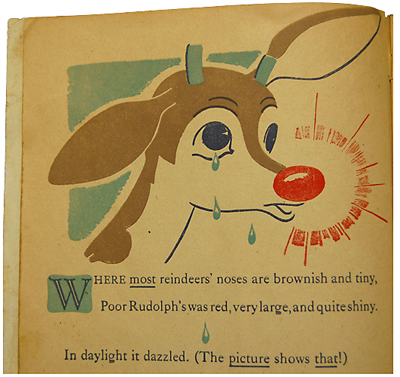 So the next Saturday morning Bob, little Barbara and the artist visited the zoo’s deer pen. On Monday morning the men took their design back to the boss. “Bob,” he said softly after seeing it, “forget what I said before and put that story into finished form.”
So the next Saturday morning Bob, little Barbara and the artist visited the zoo’s deer pen. On Monday morning the men took their design back to the boss. “Bob,” he said softly after seeing it, “forget what I said before and put that story into finished form.”
Bob began turning the story into a poem. But while he was writing it, Evelyn died in July.
He was devastated. His boss suggested he take time off work and hand over the project to someone else. Bob shook his head. “I needed Rudolph now more than ever. Gratefully, I buried myself in the work. Finally, in late August it was done.”
Bob called Barbara and Evelyn’s parents into their living room and read them the finished poem. “In their eyes I could see that the story accomplished what I had hoped,” he recalled.
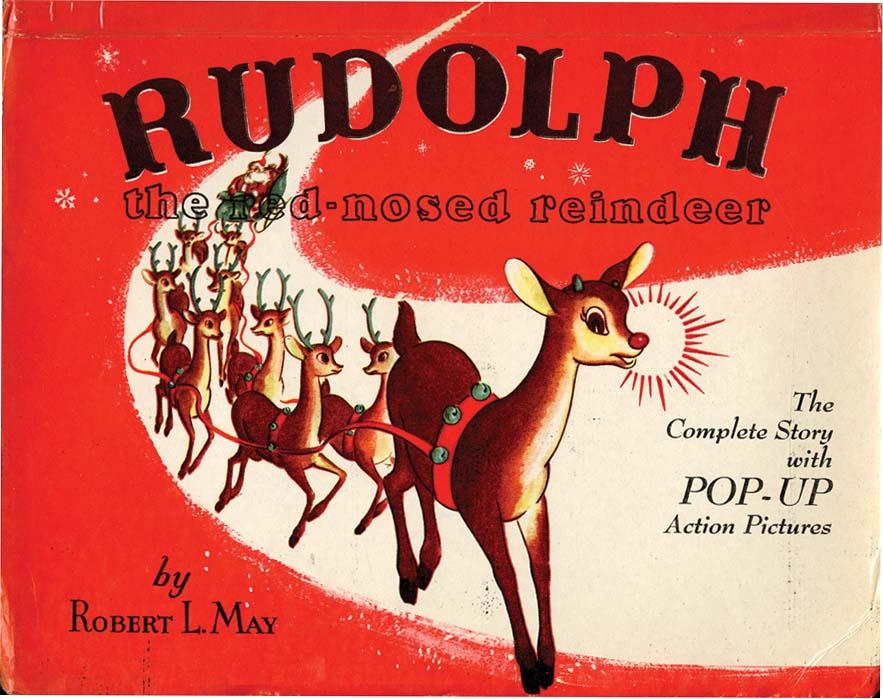 When the little book was released to Montgomery Ward customers that Christmas, it was a huge hit. The company gave away 2.5 million copies. By 1946 it had grown to 6 million.
When the little book was released to Montgomery Ward customers that Christmas, it was a huge hit. The company gave away 2.5 million copies. By 1946 it had grown to 6 million.
That same year a record company wanted to produce a spoken word version of the poem. But there was a problem: Montgomery Ward owned the rights to Rudolph’s story and image.
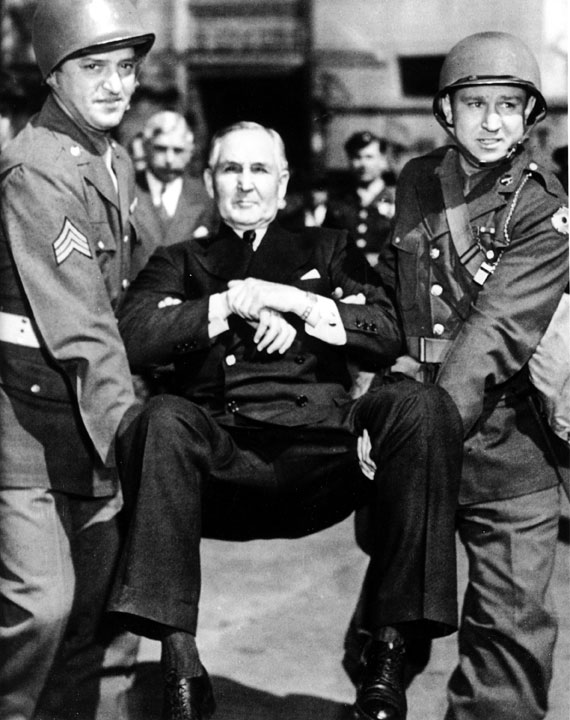 Some brave soul took the matter directly to Ward’s big boss, the notoriously crusty, tough as nails Sewell Avery. He once got into a fight with the federal government over labor relations with his employees during World War II. Not only did he refuse to comply with a direct order from President Franklin Roosevelt, National Guardsmen had to physically carry him out of his office as the government briefly took control of the company. (Avery was quickly restored to his job.) Not the kind of guy you want to mess with.
Some brave soul took the matter directly to Ward’s big boss, the notoriously crusty, tough as nails Sewell Avery. He once got into a fight with the federal government over labor relations with his employees during World War II. Not only did he refuse to comply with a direct order from President Franklin Roosevelt, National Guardsmen had to physically carry him out of his office as the government briefly took control of the company. (Avery was quickly restored to his job.) Not the kind of guy you want to mess with.
Yet something touched Avery’s heart. Maybe it was sympathy for Bob having lost his wife; maybe it was appreciation for all the favorable publicity Bob’s creation had generated for Wards. Whatever the reason, to the company’s utter astonishment Avery handed over the rights to Rudolph lock, stock and barrel to Bob.
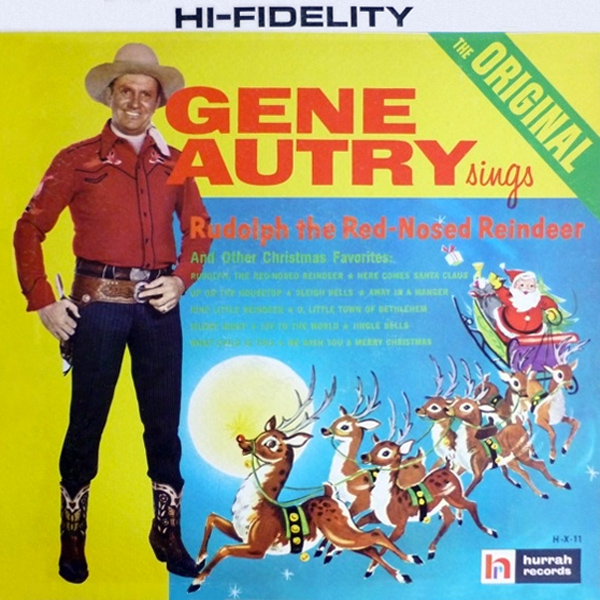 A few years later, Bob’s brother-in-law Johnny Marks wrote the famous “Rudolph the Red-Nosed Reindeer” song we learned as children. But Marks had just as tough a time bringing it to life as Bob had experienced producing his book. Bing Crosby, Dinah Shore and other popular entertainers all passed on it. Cowboy singer Gene Autry finally put it on vinyl just to make his wife stop pestering him about it. Even then it was the “B Side” to another holiday song.
A few years later, Bob’s brother-in-law Johnny Marks wrote the famous “Rudolph the Red-Nosed Reindeer” song we learned as children. But Marks had just as tough a time bringing it to life as Bob had experienced producing his book. Bing Crosby, Dinah Shore and other popular entertainers all passed on it. Cowboy singer Gene Autry finally put it on vinyl just to make his wife stop pestering him about it. Even then it was the “B Side” to another holiday song.
But Autry changed his tune when “Rudolph” became the Number 1 hit song in America for Christmas week 1949. The record was a runaway success, selling 2.5 million copies that year alone and eventually becoming the second best-selling holiday record of all time (right behind -what else?- Bing Crosby’s “White Christmas”).
Rudolph took on a life of his own over the decades. For example, a 1964 TV special about him was one of the very first annual Christmas programs for children. It helped spawn the golden age of such specials and has aired every December for the past 52 years.
 Countless books, videos and cartoons have told the story. And in perhaps the greatest acknowledgment of its success, the U. S. Postal Service honored Rudolph with his very own postage stamp in 2014.
Countless books, videos and cartoons have told the story. And in perhaps the greatest acknowledgment of its success, the U. S. Postal Service honored Rudolph with his very own postage stamp in 2014.
As for Bob, he went on to marry a Montgomery Ward colleague and have five more children. Rudolph provided him with a comfortable income, but it didn’t make him rich. After managing Rudolph interests for a few years, he returned to Wards and worked there until retirement. He passed away in 1976.
So what was his payoff? As Bob May said, “Today children all over the world hear of the little deer who started out in life as a loser, just as I did. But … when he gave himself over to others, his handicap became the very means through which he achieved happiness. My reward is knowing that every year, when Christmas rolls around, Rudolph still brings that message to millions, both young and old.”
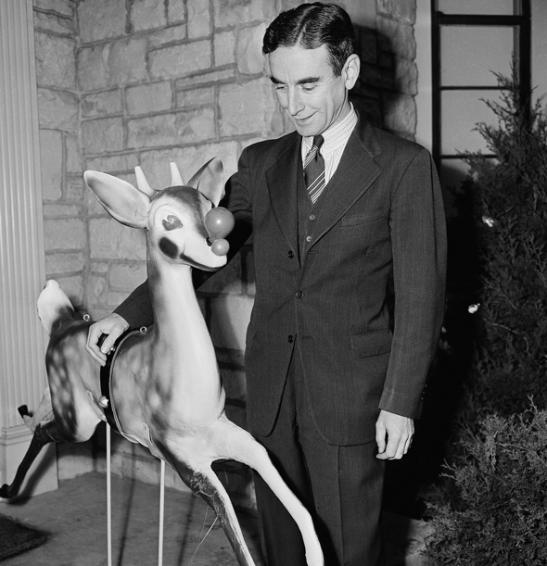 And just as the other reindeer promised, Rudolph the Red-Nosed Reindeer did indeed go down in history.
And just as the other reindeer promised, Rudolph the Red-Nosed Reindeer did indeed go down in history.
Did you find this enjoyable? Please continue to join me each week, and I invite you to read Tell it Like Tupper and share your review!
Curious about Tell It Like Tupper? Here’s a chance to see for yourself. Take a sneak peek at a couple chapters in this free downloadable excerpt.


Have you forgotten that White Christmas was written by Irvin Berlin( a jew)
No, I haven’t Gene. That was just a different story.
That is a wonderful story! Thanks for sharing it.
Glad you enjoyed it, Linda!